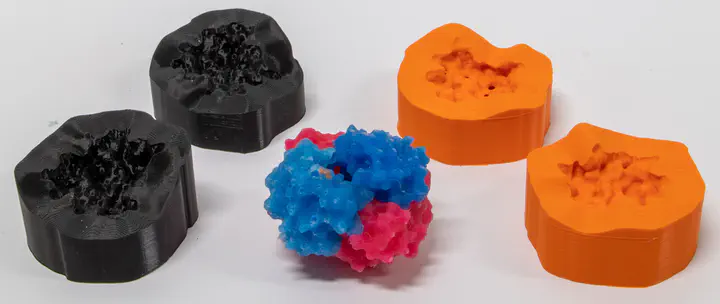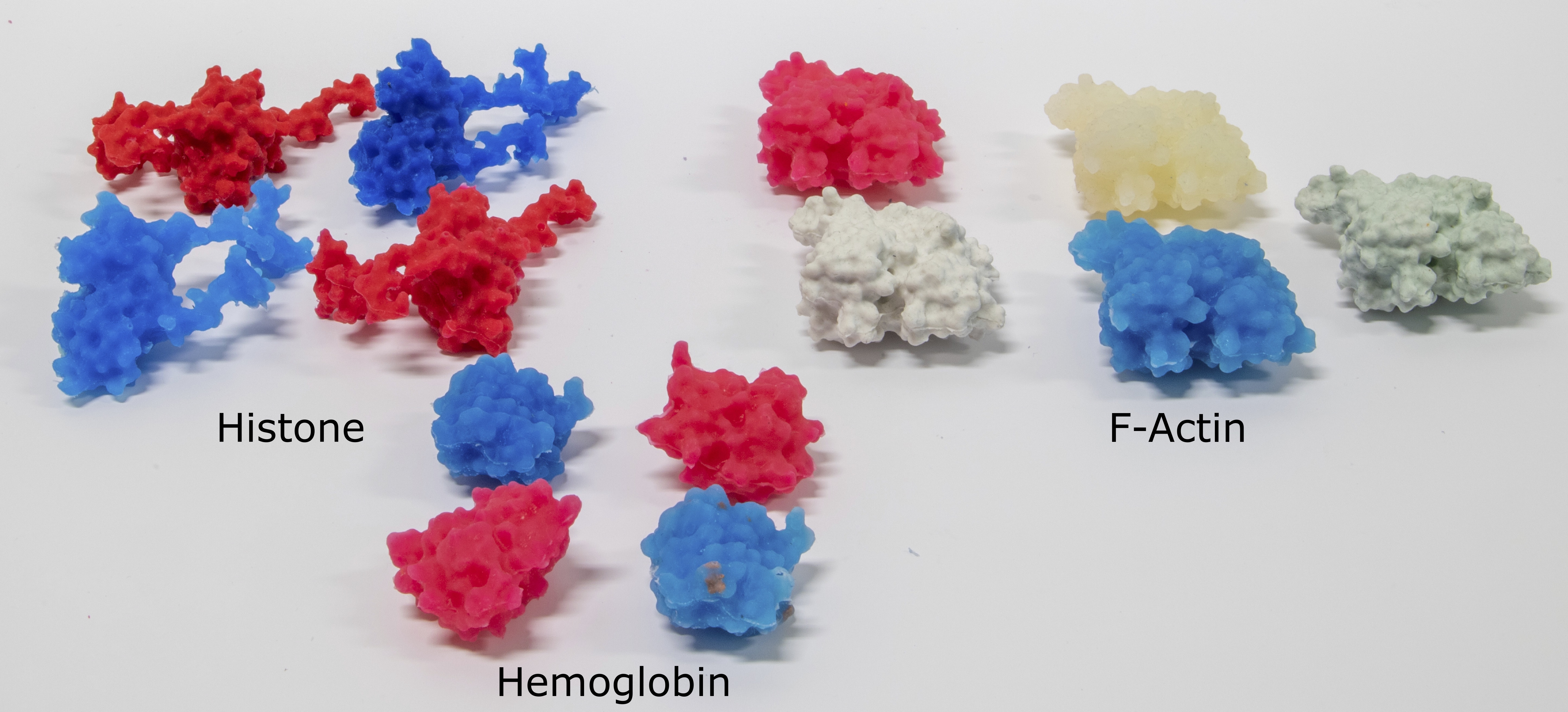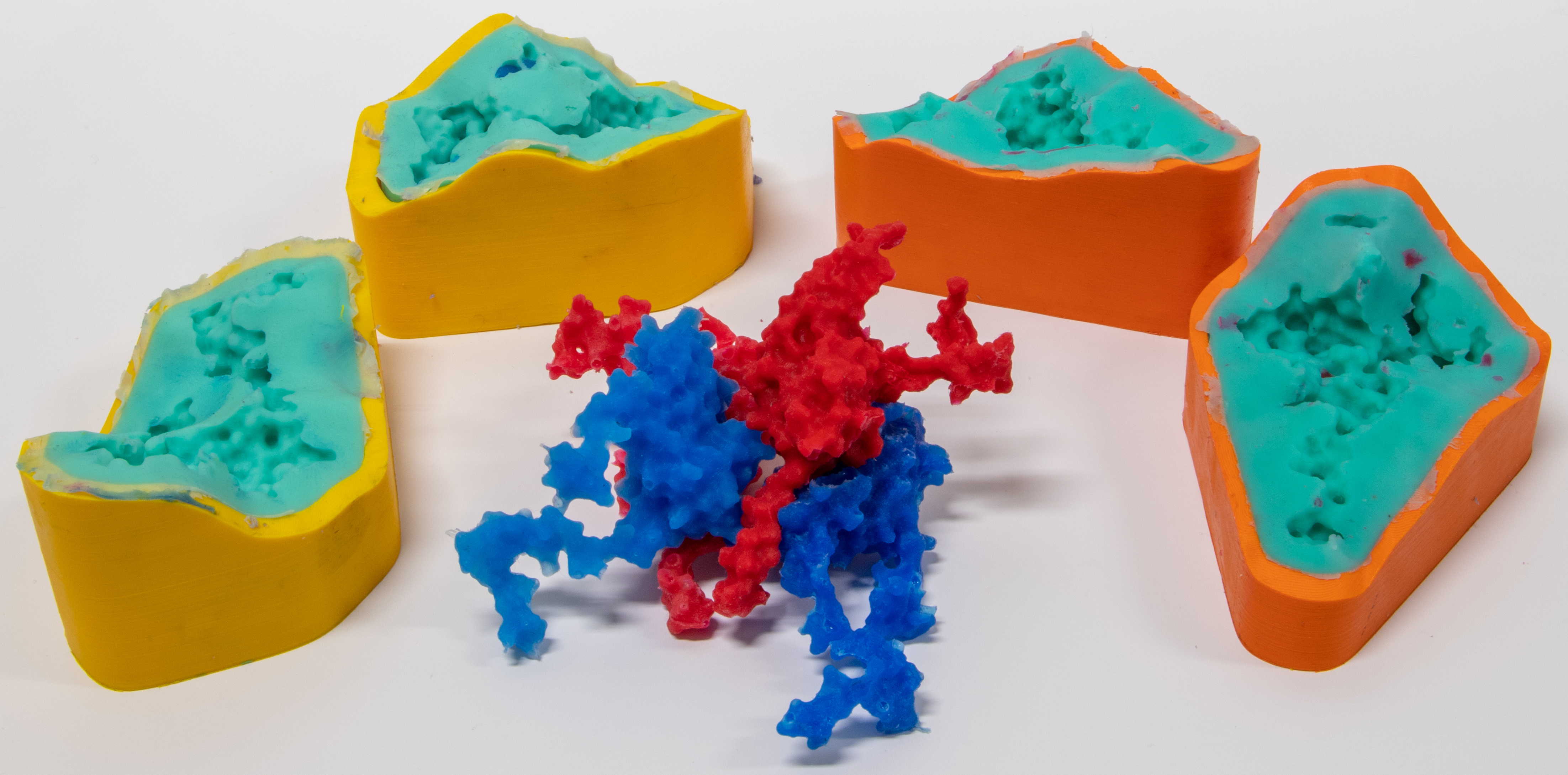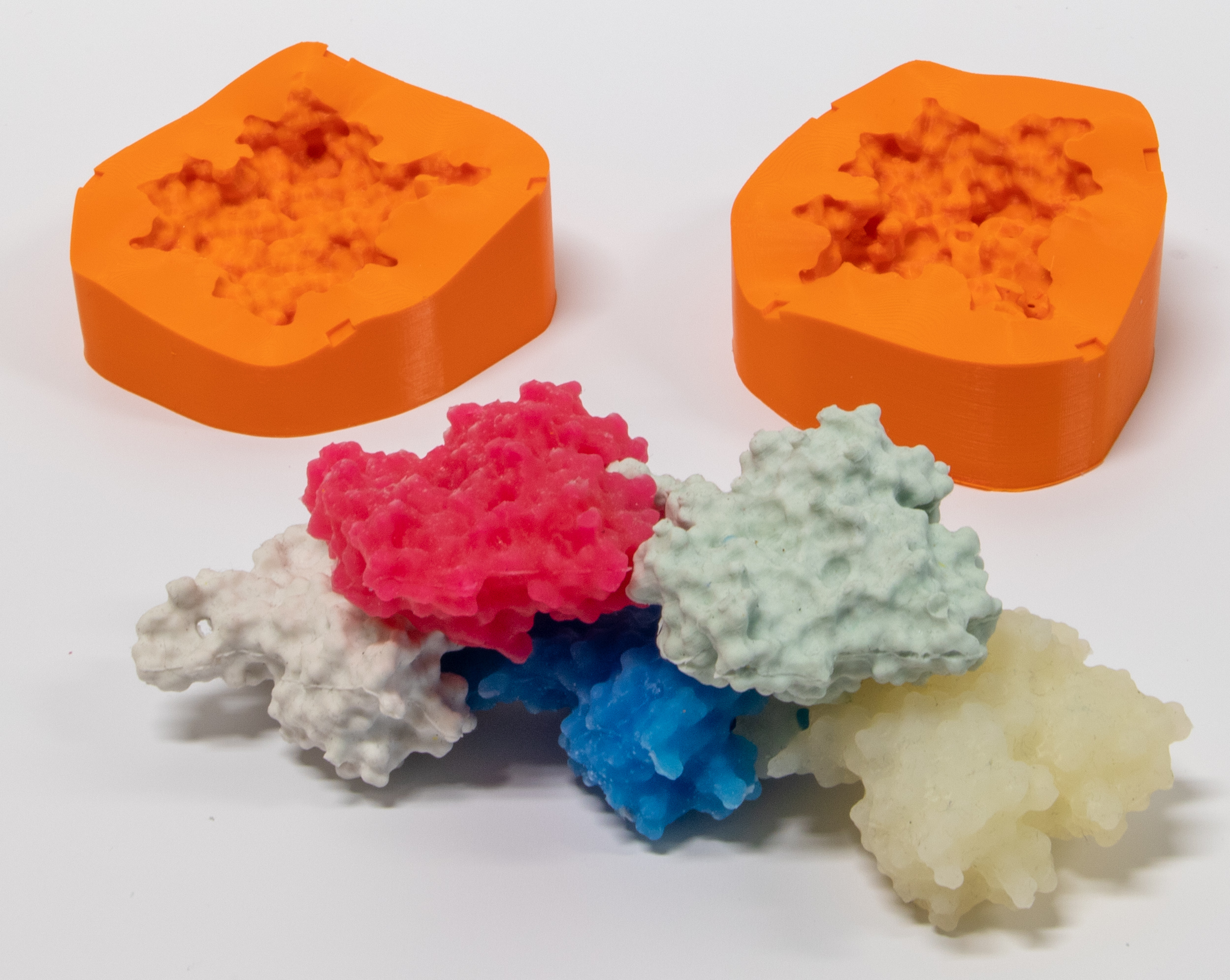
Abstract
Tangible 3D molecular models conceptualize complex phenomena in a stimulating and engaging format. This is especially true for learning environments, where additive manufacturing is increasingly used to produce teaching aids for chemical education. However, the 3D models presented previously are limited in the type of molecules they can represent and the amount of information they carry. In addition, they have little role in representing complex biological entities such as proteins. We present the first complete workflow for the fabrication of soft models of complex proteins of any size. We leverage on molding technologies to generate accurate, soft models which incorporate both spatial and functional aspects of large molecules. Our method covers the whole pipeline from molecular surface preparation and editing to actual 3D model fabrication. The models fabricated with our strategy can be used as aids to illustrate biological functional behavior, such as assembly in quaternary structure and docking mechanisms, which are difficult to convey with traditional visualization methods. We applied the proposed framework to fabricate a set of 3D protein models, and we validated the appeal of our approach in a classroom setting.


